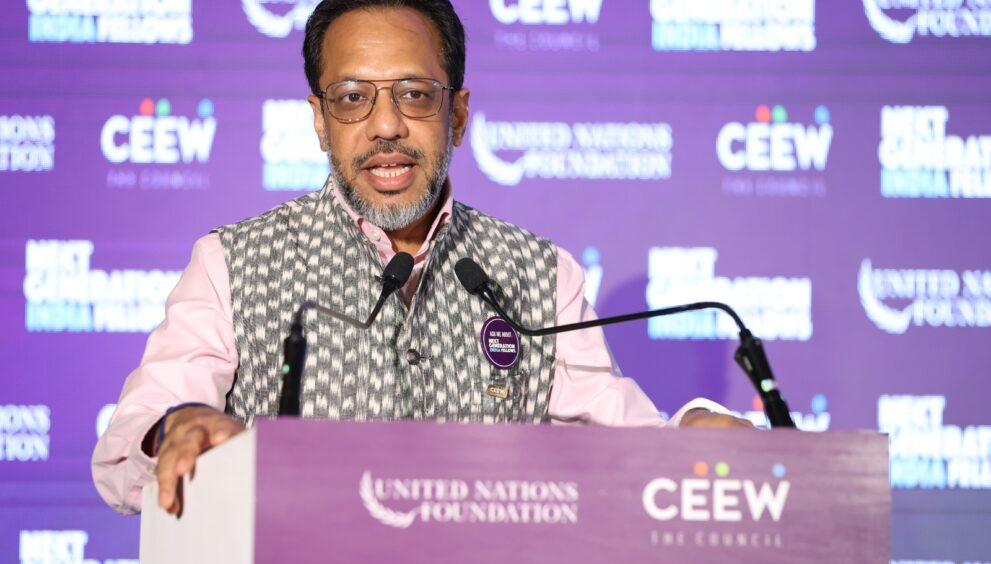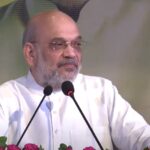India’s Youth Key To Shaping Greener Future: CEEW’s Arunabha Ghosh

The only way to predict the future is to shape it and India’s youth are the key to building a greener, more sustainable world, said Arunabha Ghosh, CEO of the Council on Energy, Environment, and Water (CEEW), who believes that India’s young population holds the power to drive the nation towards a sustainable future.
In an interview with BW Sustainabilityworld, Ghosh shared his insights on how the youth can lead innovation in the clean energy sector, bring sustainability to the forefront and ensure that the benefits of this progress reach every corner of the country.
How can India leverage its demographic dividend, particularly the youth, to foster innovation in the clean energy sector and create new economic opportunities by 2047?
India is the youngest country in the world, with more than 50 per cent of our population under the age of 25. This gives us a significant advantage as we move toward 2047, when India will mark its centenary of independence. Young India has the potential to shape the economy of the future by being on the cutting edge of technological innovation, creating new business models, and driving sustainable practices.
For instance, young entrepreneurs can think creatively about shifting from centralised to distributed energy systems, using clean energy for productive activities, or developing circular economies for critical minerals. They have the brains, energy, and innovative spirit needed to build the future, but they will also need access to capital and opportunities to define and pursue their aspirations. By creating a circular economy of sustainable businesses, young Indians can become both creators and consumers in a thriving, green economy.
How can we ensure that the benefits of India’s progress in sustainability and clean energy reach rural and underserved communities? What roles can young leaders play in this?
It’s essential to recognise that innovation is not confined to urban areas. Rural India is a hub of creativity and resourcefulness, and we must support and amplify the innovations emerging from these regions. The key is to view rural communities not as beneficiaries of external aid but as active participants in developing solutions.
To ensure that sustainability reaches rural areas, we need to provide rural entrepreneurs with better access to credit and capital. We also need to connect these entrepreneurs with policymakers, so that the innovations happening on the ground influence policy decisions. For example, using solar power for chilling milk or drying food can significantly increase the value of agricultural products. These are practical innovations that can transform rural economies, and young leaders can play a pivotal role in bringing these solutions to the forefront.
What strategies is CEEW implementing to engage young people in environmental sustainability, and how can these strategies be scaled to have a larger impact by 2047?
At CEEW, we have started several initiatives aimed at engaging young people in environmental sustainability. One of our most recent efforts is the Next Generation India Fellows program, which we developed in collaboration with the UN Foundation.
In addition, we have created the Global South Fellowship program to connect young people from across the Global South and we’ve engaged with over 1,000 youth across 90 countries in various initiatives.
For example, we’ve organised campaigns like “Love in the Times of Climate Change,” where young people used poetry and art to express their perspectives on climate issues.
What role does effective governance play in shaping a sustainable future, and how can young leaders contribute to improving governance at all levels?
Governance is critical to achieving sustainability and it begins at the local level. It’s not just about national or state elections; effective governance happens in our neighbourhoods, where the most immediate impacts are felt. For example, the first heat and humidity action plan was developed at the ward level in Thane, and they’re now expanding this initiative to 15 cities in Maharashtra, with plans to scale it to 300 cities across India.
Young leaders can significantly contribute to improving governance by getting involved at the grassroots level. Whether it’s setting up heat shelters, providing early warnings for floods, or participating in state-level policymaking, young people can drive change from the ground up. We need their voices to be heard at both the national and international levels, ensuring that their actions and aspirations are recognized as part of the global conversation on sustainability.
What are CEEW’s internal goals and strategies for the future, and how do you plan to achieve them?
Our next objective is to bring sustainability from the margins to the mainstream and make it a core part of India’s narrative to the world.
Our strategy includes developing future power markets, ensuring that India’s industry remains globally competitive and sustainable, and improving the quality of life through initiatives focused on air, water, food, and mobility. We’re also working to secure India’s energy future by focusing on solar panels, wind turbines, and critical minerals, all while creating a green economy that is jobs-intensive.
Ultimately, the youth will lead this transformation. As I often say, the only way to predict the future is to shape it. And India’s youth are the key to building a greener, more sustainable world.




































































































































































































































































































































































































































































































































































































































































































































































































































































































































































































































































































